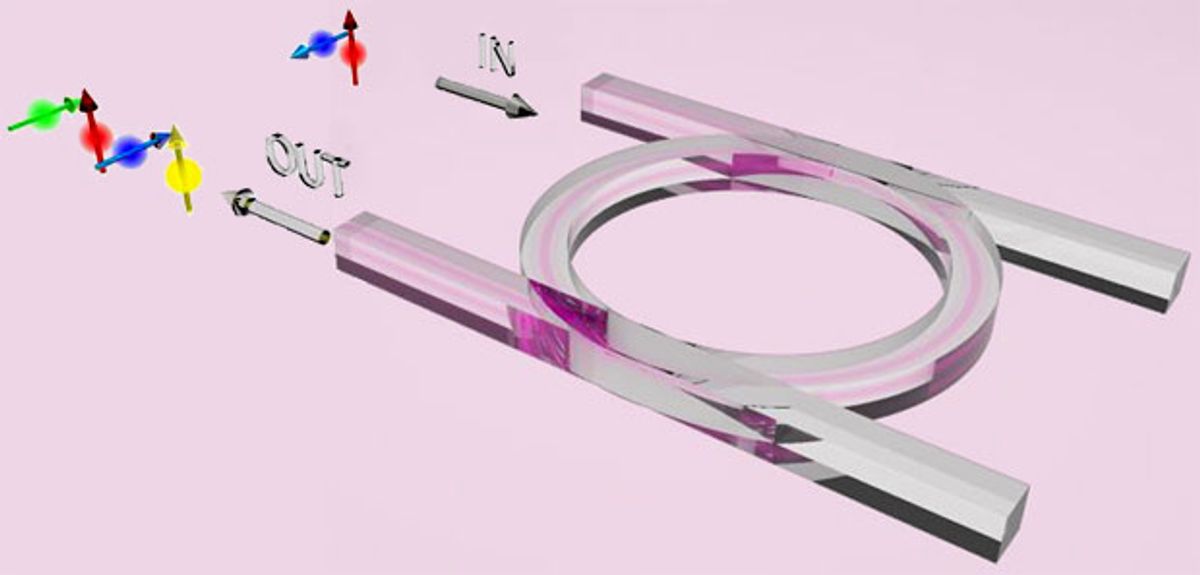Optics researchers from INRS-EMT in Quebec, Canada have developed a new method of generating photon pairs — tiny entangled particles of light — that are small enough to fit onto a computer chip.
The new power-efficient approach could enable next-generation quantum computers and optical communication technologies. The results will be presented at the Optical Society's (OSA) 98th Annual Meeting, Frontiers in Optics, being held Oct. 19-23 in Tucson, Arizona, USA.
Generating photon pairs on demand is only a recent breakthrough, but it's important for creating certain computer networks that can process quantum information. Methods of photon polarization — the direction in which an electric field associated with a photon oscillates — thus far only generate photons with same polarization as the laser beam used to pump the device. These states must be mixed afterward to create cross-polarization. The new method shortens the process by directly generating cross-polarized photon pairs, from devices less than one square millimeter in area.
To generate cross-polarized photons, the research team used two laser beams, one polarized vertically, the other horizontally. A micro-ring resonator (a type of optical cavity that’s anywhere from 10 – 100 micrometers) prevented the two beams’ “classical effects” from destroying the photons’ fragile quantum states, while at the same time amplifying quantum processes.
It’s the first time classical effects were suppressed on a microchip. The researchers believe this carves an easier path for building devices based on quantum computing designs that require mixed polarizations.
Perhaps most importantly, this new chip fabrication process is compatible with those currently used for conventional chips. "It enables a future coexistence of our device with standard integrated circuits," said INRS-EMT researcher Lucia Caspani in a press release. He and his colleagues hope this persuades other scientists and even some manufacturers to adopt this method.



